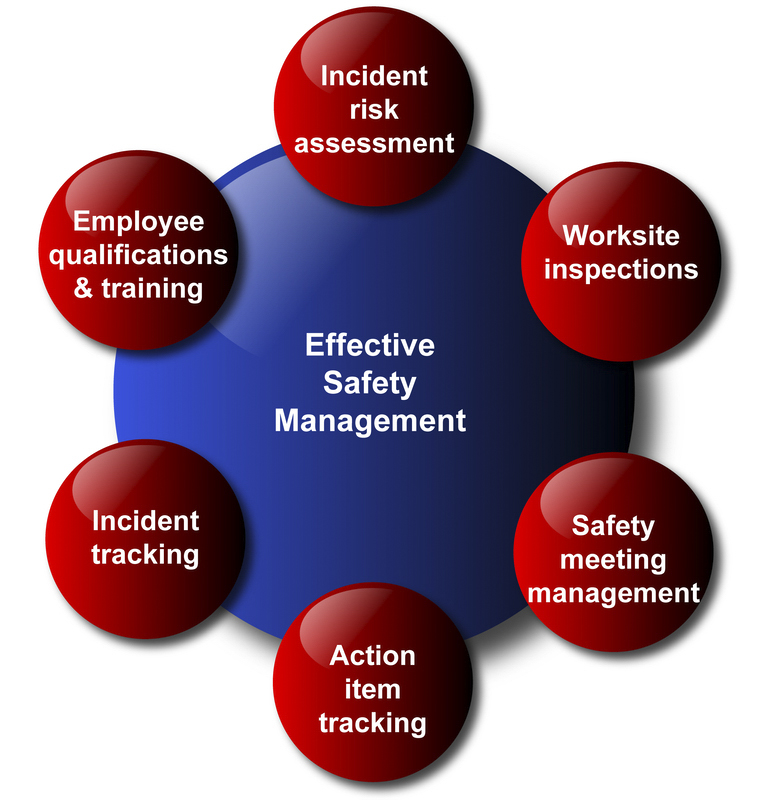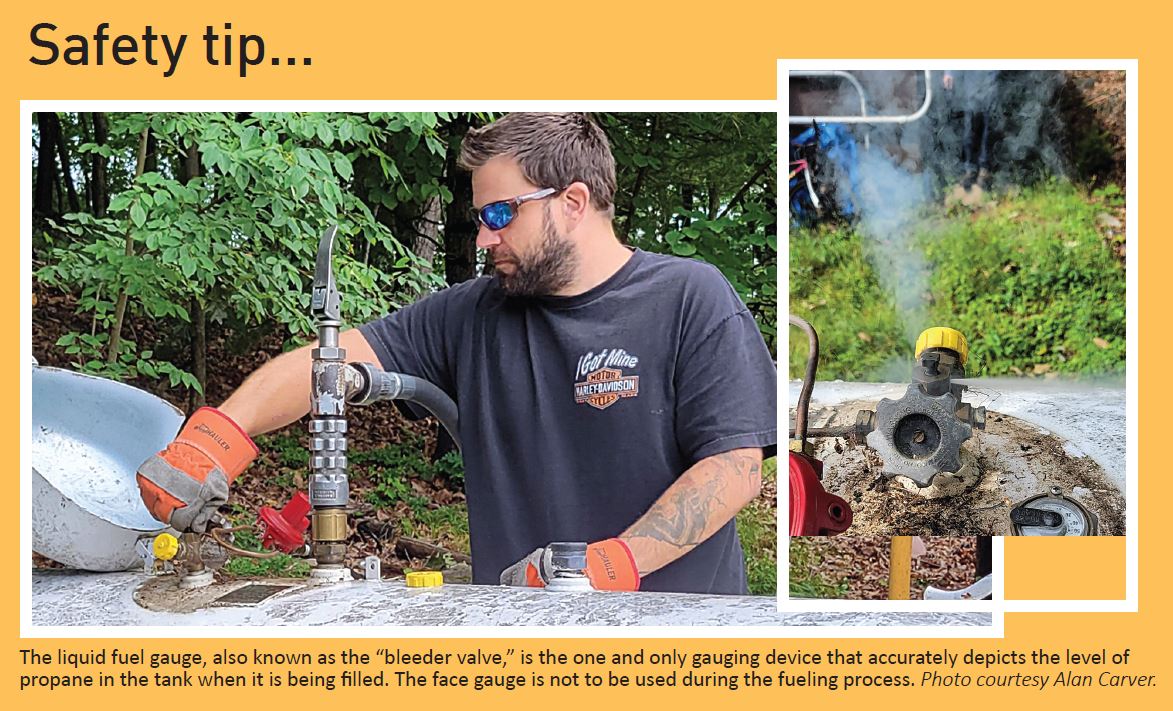If you’ve spent any length of time in the propane industry, you know that paperwork is a hassle to deal with. It’s a pain to fill out, carry around and then enter into the back-office system. Recalling specific paperwork when you need it for legal counsel or compliance checks down the line? Forget about it! In this day and age, there’s a much better way to monitor, document and recall your propane inspections and compliance—by using a technology-based system whose information is stored securely in the cloud.
In this article, we’ll dive into how using technology for propane safety compliance can benefit your company, reduce risk and help ensure accuracy and completeness when it comes to your propane safety documentation.
Benefits of Using a Cloud-Based System to Document Compliance
Let’s face it—paper forms are an archaic way of recording information and are long overdue for an update.

The downsides of continuing to utilize paper forms are that they are prone to:
• Slip between truck seats
• Get damaged by spills and inclement weather
• Host messy handwriting
• Contain missing or incomplete information 30% of the time, making your documentation null and void in the case of an incident
• Stay in folders and filing cabinets for days, weeks or months on end, which is too long if there is a serious issue or important follow-up that needs addressing
• Must be manually entered into a computer, requiring more billable hours
Instead of using paper forms to track your safety meeting discussions and attendance, using a cloud-based system will skyrocket your propane company into modern-day efficiency. Keep reading to learn propane marketers’ favorite benefits when it comes to using online systems to track information.
Top Benefits of Technology for Propane Documentation
Using a cloud-based system is the superior way to manage and document your safety inspections, leak checks, priority follow-ups, NFPA 58 compliance and more. When your propane company uses a digital documentation system, propane paperwork and forms are:
• Automatically entered into your system when the notes are written
• Available to all team mem- bers instantly, anywhere, at any time
• Clearly legible for anyone to read
• Not prone to being lost in the shuffle
• Immune to issues like slipping between truck seats or being ruined in the rain
• Able to automatically remind you of necessary follow-ups
• Helpful in guiding employees through the process by providing code and compliance information
• Present a more professional brand image when sharing forms with customers or information with legal counsel
How Digital Documentation Increases Accuracy & Reduces Risk
You may or may not be shocked to learn that the propane industry has a documentation error rate of 30%—that means nearly one-third of your documentation wouldn’t protect you in the case of a catastrophic incident or litigation. Not to mention, it’s inconvenient and costly to send your drivers and technicians back to the job site to correct errors.
The good news is that there’s a better solution: a propane safety documentation service offering error recognition technology. This is an advanced feature that detects errors in real time (including whether critical operating tests do not meet NFPA code requirements) and does not allow the form to be submitted until the problems are rectified. This gives the driver or tech instant feedback while they are still at the job location, allowing them to fix the error before it is submitted into your cloud database.
An Added Benefit: Photo Documentation
Look for propane safety documentation platforms that include photo documentation so that your company can benefit from these significant advantages:
• Allow every staff member to get a better understanding of the situation
• Verify your compliance claims with time-stamped photos
• Offer protection from homeowners making modifications that remove your tank sets from NFPA 58 compliance
• Provide detailed information for training and feedback purposes
• Communicate important visual details to your insurance underwriters
Put Your Best Foot Forward with Digital Propane Safety Documentation
Digital documentation is the best way to put the safety of your customers, team members and propane company at the forefront. If you’re still using paper forms to track and organize your inspections and compliance, look into electronic documentation software to increase the accuracy and completeness of your record keeping, reduce risk and enhance the efficiency of your propane company’s operation. ICM
Cammett is the Safety & Compliance Director at P3 Propane Safety. He has more than 30 years of experience, led multi-state safety programs, conducted safety training and audits and owned his own fuel company
When you own or operate a propane company, regulator replacement is a crucial procedure that should be completed regularly to help ensure the safety and proper operation of the propane equipment you service. We know you’ve heard it before—if it isn’t documented, it didn’t happen. Documenting your regulator replacements is imperative, as is documenting any testing completed prior to putting a regulator into service. Keep reading this article to learn the importance of regulator replacement and accurately documenting your propane company’s regulator installations and replacements.
The Purpose of Regulator Replacement
Regulators control the pressure to downstream equipment. A piece of equipment called a seat disk allows gas to flow through the piping while a diaphragm moves back and forth to control downstream gas pressure. Sometimes, when the demand for gas is low, the seat disk can jam or lock up. Building pressure behind a locked-up disk can eventually divert gas through the relief valve, a release mechanism designed to prevent equipment damage. Timely regulator replacement is necessary to maintain a well-working propane system.

Recommended Frequency
Due to the amount of wear and tear this equipment sees daily, regulator replacement guidelines are set by each regulator manufacturer. Follow manufacturer-recommended guidelines to stay compliant with the specific system’s regulator lifespans and replacement frequency. It’s easy to see why documentation is so critical for such an intermittent task—this is a part that can last for many years if manufactured and maintained properly, so replacement may no longer be on your radar by the time it’s necessary for a given piece of equipment. So, what’s the best way to track your propane company’s regulator replacement needs and frequency? Read on to learn how our propane safety experts recommend that you document and track your regulator replacements to ensure high rates of accuracy and compliance.
Documenting & Tracking Your Regulator Replacements
Tracking regulators in your portfolio to ensure they are replaced before their manufacturer-recommended expiration is critical to reduce risk and maintain overall compliance. Be sure to maintain accurate and updated documentation on regulator replacements to keep your employees safe, your customers protected and your company safeguarded in the case of litigation. Our team recommends using digital, cloud-based compliance software that provides automated notifications when regulator replacements are due, significantly reducing the risk of outdated regulators remaining in service.
About the author: Brent Cammett is the Senior Consultant of Safety & Training at P3 Propane Safety. You can contact him at Brent_Cammett@bostonenv.com or at P3PropaneSafety.com. ICM
Whether you own, operate or manage a propane business, safety training is always at the top of your priority list. Proper training is critical to meet the many compliance and regulatory requirements in our industry, keep employees safe on the job and provide customers with the very best service. If you are onboarding your employees with propane skills training and conducting refresher training as needed, you’re off to a great start. But does your propane safety program include routine safety meetings?
Safety meetings are an integral part of any propane safety program because company-wide communication is essential to maintain compliance with DOT, OSHA, and other State propane regulatory requirements. Creating a monthly calendar of safety and operational topics is a key strategy that can help you save time, reduce risk and improve efficiency overall.
Safety meetings are recommended on a monthly or quarterly basis, depending on your company’s unique schedule and staffing situation. And before you start to worry about adding another item to your ever-growing to-do list, here are some tips to set up a safety meeting schedule and the benefits you will see once you do.
Incorporating Routine Safety Meetings into Your Busy Schedule
Combine with your monthly plant and truck inspections.
It is ideal to conduct safety meetings once per month. This gives your managers and staff a designated time to get together each month to review training topics, ask operational questions and generally catch up along with conducting required monthly plant and truck inspections. If busy schedules or staffing constraints make monthly meetings a challenge, schedule your safety meetings quarterly instead.

Choose topics in advance.
Scrambling at the last minute for a safety meeting topic or materials prior to first-of-the-month paperwork can add strain to your management team’s already-packed schedule. Instead, get together with your leadership to select monthly (or quarterly) meeting topics in advance. If possible, consider a 12-month safety calendar that allows plenty of time to collect materials and schedule your agenda. Topics can be selected based on seasonal needs like leak check procedures before the busy season, operational improvement areas such as cathodic protection testing, or annual refresher training like PPE reminders.
Going into each meeting with a specific topic and general agenda will not only help the leaders conduct the meeting but also give technicians, drivers and staff the opportunity to really focus on the topic at hand.
Collect training guides and materials.
Make sure you have a training handout or some type of source material to go along with each meeting’s topic. Provide handouts for your employees to follow along with during the meeting and to hold onto to reference in the future. Quizzes can be a helpful way to evaluate each employee’s understanding of the topic and document relevant training. When incorporating your materials, be concise to a single discussion topic with a meeting goal of 30 minutes or less for material review, employee testing and documentation.
Update your calendar each year.
Finally, it’s recommended that you refresh your safety meeting calendar each year. Maybe you did not cover a particular topic, or you have some that should be revisited annually. Plan at least 9–10 new safety meeting topics each year with the option of having two annually recurring safety meetings for items such as DOT security plan review or fire extinguisher training. Either way, setting up your schedule for the upcoming year will help your team stay on top of routine safety meetings.
Benefits of Regular Safety Meetings
It can be a challenge to stick to a regular meeting schedule in the propane business, especially once the busy season starts and your drivers and technicians are needed more in the field. However, if you can get into a groove with monthly or quarterly safety meetings, you will see lasting benefits that extend beyond the service department, including:
Improved employee performance
Regular safety meetings will allow your service technicians, delivery drivers and office staff to ask operational questions, further develop their skills and learn to resolve any errors before they happen.
Increased efficiency for management
Combining a 15- to 30-minute monthly safety meeting with your monthly plant and truck inspections can save time, answer operational questions and pass along important regulatory information to all employees.
Maintain compliance with greater ease
Your safety meeting calendar and pre-planning also help to document your company’s overall safety program and provide a paper trail for your code compliance. You’ll have a record of when certain topics and requirements were covered, tested and documented. As a bonus, check with your State regulator to see if you may receive CEU hours for the safety testing and documentation.
Don’t Wait until the Fall! Get Started with Safety Meetings Now. ICM
If you aren’t sure where to start or would like some help planning a calendar and collecting training materials, P3 Propane Safety can help. Visit p3propane.com to connect with a propane safety expert who can help create your safety meeting schedule, provide customized training materials, and refresh your program each year.
